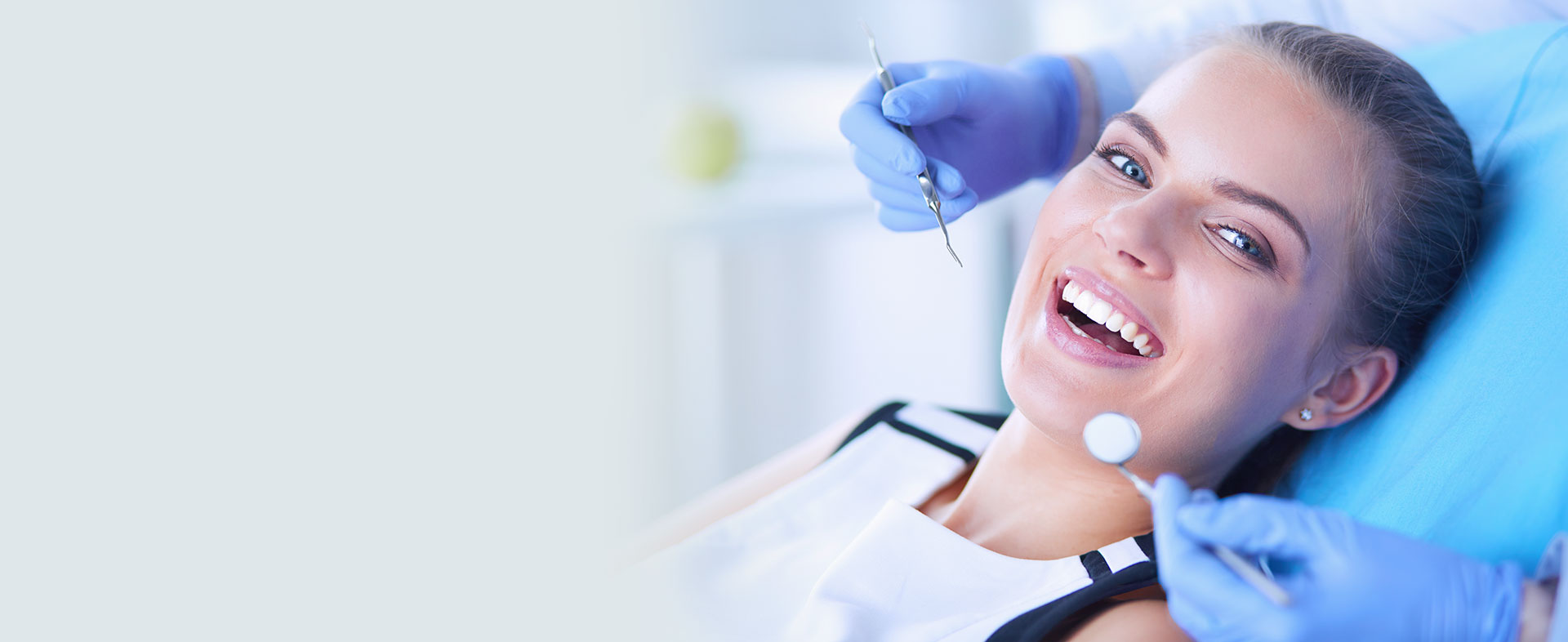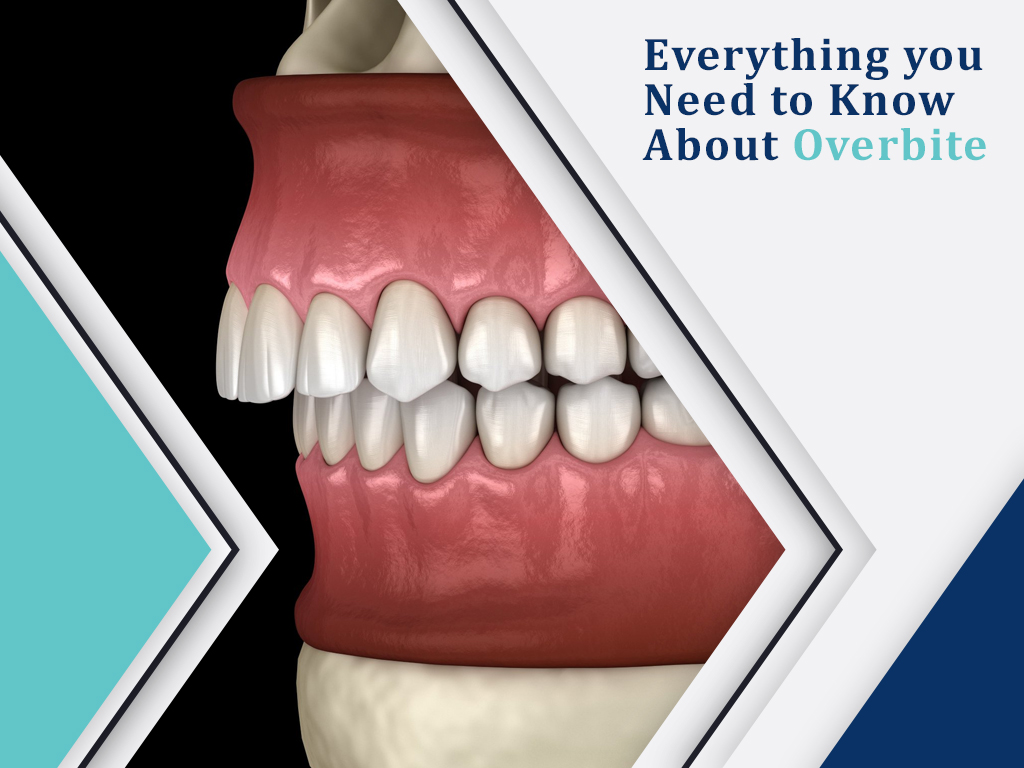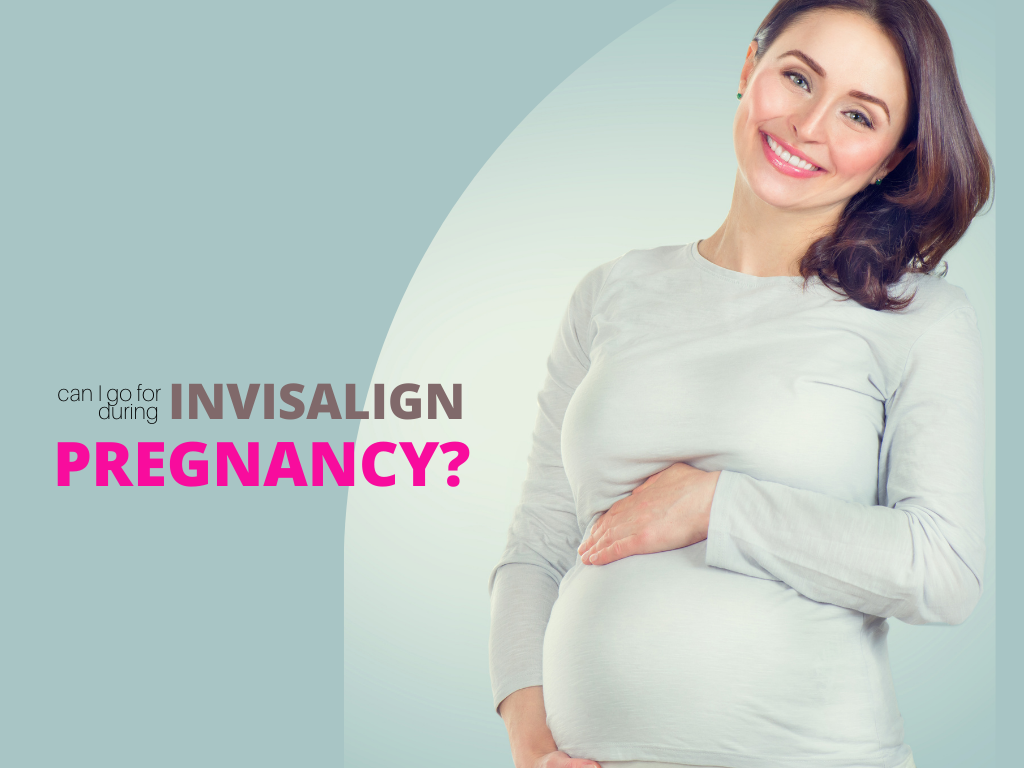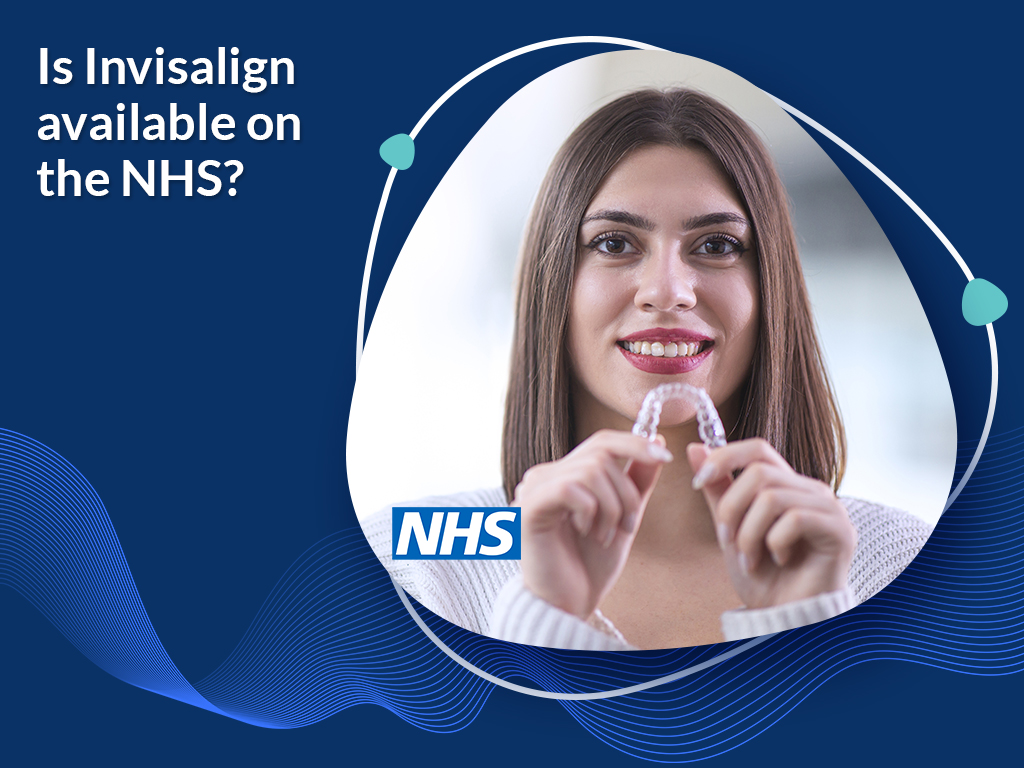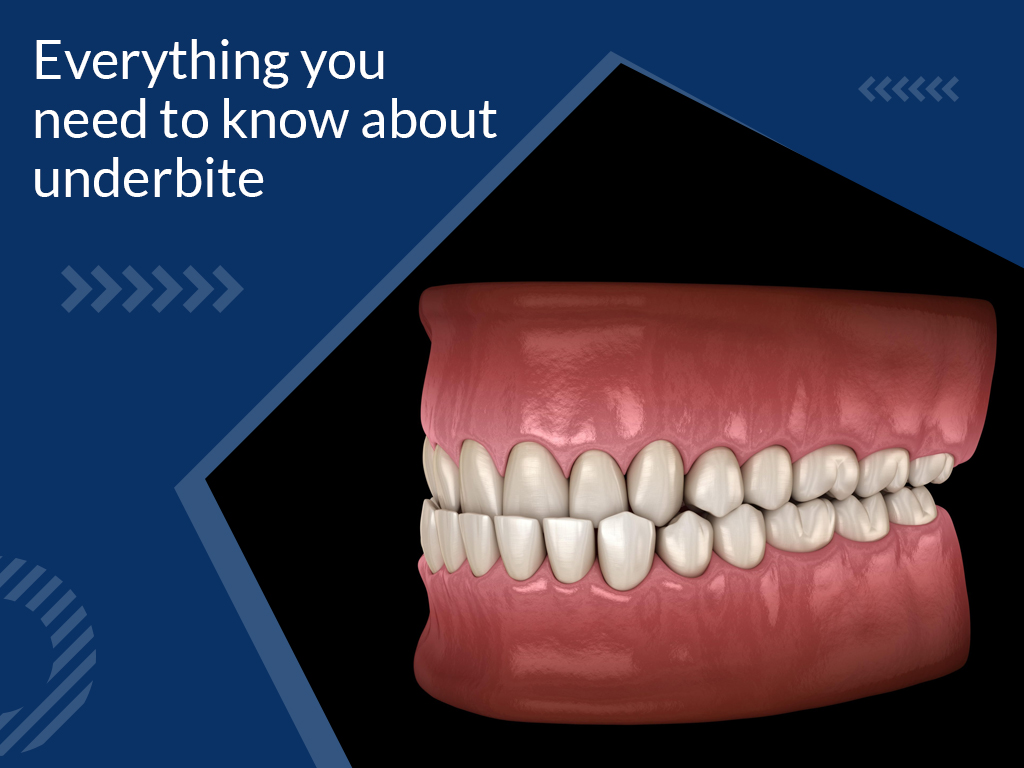
Everything you Need to Know About Underbite
An underbite is a common orthodontic condition responsible for many dental visits each year. It is a condition in which the lower jawprotrudes outwards more than the upper jaw, thereby causing your front lower teeth to stick out.
It is barely noticeable in many people who have this condition, except the bottom teeth sitin frontof the top teeth. This can affect the appearance of the face, as well as proper speech and eating. As with any dental condition, it can differ in severity between individuals.
This article will tell you everything you need to know about an underbite and the different options for treatment.
Table of contents
- What is an underbite?
- Do I need underbite correction?
- How to fix an underbite
- Underbite and cleft palate and lips
- Underbite: Conclusion
Save Upto £1230 offon Invisalign clear braces
*T&Cs apply
Appointments are available in the morning and evening for your convenience.
What is an Underbite?
An underbite is a condition where the lower jaw protrudes outwards more than the upper jaw,making the bottom front teeth stick out. It is also known as mandibular prognathism or Class III malocclusion.
The condition can sometimes makes the face and mouth appear unnaturally enlarged, and it can range in severity from being hardly noticeable to extremely obvious. 5-10% of the general population is affected, mostly due simply to genetics.
It is hardly noticeable in many people with this condition when the bottom teeth are slightly resting in front of the upper teeth. It can be very noticeable in severe cases where there are gaps between the two sets of teeth.
It is advisable to correct your underbite regardless of the severity, because it can lead to problems in the future if left untreated. It is easier to treat underbite in children than in adults, because the jaw bones are still developing so are easier to move.
What Causes an Underbite?
- Genetics: Underbites are mostly genetic —if one parent has or had an underbite, there is an increased chance of their children having an underbite. There is also a link between cleft palates and lips andunderbite. Genetics are also responsible for the general shape and size of a person’s jaw and teeth.
- Childhood habits: Some childhood habits and behaviours can increase the risks of an underbite; such as:
- Thumb-sucking
- Using a bottle feeder for too long beyond the infant years
- Children above three years old using pacifiers/dummies
- Tongue- thrusting
- Tumours: Tumorus in the mouth and jawbones can cause a protrusion of the jaws, leading to an underbite.
- Injury: Severe injury to the face can create permanent damage to the jawbones.Although it is possible to repair broken jawbones, they still won’t fit together properly after surgical realignment. This can lead to an underbite.
Do I need underbite correction?
No kind of underbite is considered normal or natural, while some individuals may regard a small overbite as normal or harmless. It is best to correct your underbite as soon as possible; and the quicker you do so, the easier the treatment will be.
It is advisable to start treatment early in children, when their jaw bones are still flexible and can be moved easily.
Some of the problems caused by underbite are:
- Pain in the mouth and face due to the misalignment of the jaw
- Difficulty in speaking, (e.g. lisp and slurred speech),
- Difficulty eating foods (having problems with chewing and biting),
- Tooth decay due to excessive wear of the front tooth enamel,
- Halitosis (bad breath) caused bybacterial infection, and breathing through the mouth,
- Night-time sleeping difficulties, including snoring and sleep apnea,
- Low self-esteem due to the altered shape of the face
Save Upto £1230 offon Invisalign clear braces
*T&Cs apply
Appointments are available in the morning and evening for your convenience.
How to fix an underbite
There are a good number of ways to successfully fix an underbite; your dentist will have to examine your jaw first, and will know the best approach for your situation.
In most cases, dentists usually combine two or more treatments to give you or your child an effective result and long-lasting solution.
Below are the most common treatments for an underbite:
Upper jaw expander
This method is used in cases where the underbite is caused by an upper jaw that is not fully developed;so a jaw expander is used to help develop the jaw into the correct shape.
A jaw expander is a metal device that fits over the back teeth and pushes out the teeth gradually. It also expands the palate (roof of your mouth). Some devices are fixed in place, while others are removable like a retainer.
This method of underbite correction is the least noticeable; it is only noticeable when you laugh or yawn because it is placed at the back teeth and the top of your mouth.
Some people who use this method of treatment report some minor discomfort, but this is normal when trying to manipulate and realign the jaw bones.
You can make this treatment a little easier by starting at a younger age because jaw bones don’t fuse until after 12 or 13 years of age. It is hence usually a little more comfortable and better-tolerated in children below this age. The time frame to use a jaw expander is usually one year, but it can vary depending on how many teeth need to be moved.
When you’ve completed your treatment, you will have to wear a retainer for a while to help the new bone grow and correct the overbite permanently.
Reverse pull headgear
The idea of a reverse pull facemask or headgear might alarm you, but it is an effective and common way to fix an underbite. The headgear is attached to braces or a retainer by electric bands, while it rests on the forehead. This pulls the upper jaw slowly into position.
This method can also be used in addition to a jaw expander to correct an underbite. It has a good success rate of 75%; especiallyif treatment is started before the age of 10.
To benefit from this treatment method, the headgear has to be worn as often as possible, most especially at night and even during the day. Follow any instructions from your orthodontist and make sure you wear it regularly, because it can reduce the need for surgery later in life when worn correctly.
Chin cap or cup
This method works in a slightly different way — a chin cap or cup fits over the head from the crown to the chin, and essentially shrinks the jaw bone by pulling it backwards during the years the bone is growing.
The chin cap is used alongside a reverse pull facemask, to enable the upper jaw to move into a better position. This can primarily be worn while sleeping.
Underbite braces
Braces are one of the most commonly used methods for treating underbite; the braces push, twist, and move your teeth into a better position and more natural alignment.
If you opt to be treated privately, you will have the option of choosing from a wider range of braces- includingclear or lingual varieties, which are very discreet options. However, the NHS will only cover conventional metal braces.
After completing your treatment with braces, you will have to wear a retainer to maintain the new alignment of your teeth and prevent them reverting to their original position.
Invisalign for underbite correction
You can also useInvisalign for treating underbite. These clear braces have recently exploded in popularity as they are almost invisible. They are an excellent option for people if you would like a very discreet treatment method for realigning your teeth.
It is usually possible to treat simpler cases ofunderbite using Invisalign braces alone, but you may need to incorporate it into a wider course of treatment for more complex cases.
Tooth extraction
Sometimes, crowded teeth in the lower jaw can cause an underbite. Dentists usually advise patients with this condition to have one or more teeth removed. This makes braces more effective, as it creates space for the rest of the teeth to adjust perfectly.
This is a very routine procedure all dentists are trained for. It is usually carried out under local anaesthetic, although general anaesthetic can be used for multiple or complicated extractions. The process is usually pain-free and simple, and can be done by your general dentist.
Underbite treatment summary
More severe or complex underbite cases may require surgery. The processes can be different, and they depend on the issues identified by the surgeon.
The surgeon may have to push the lower jaw back and reposition it, or may just focus on the upper jaw. With either method, there will be small plates and screws inserted around the bones to ensure they don’t move back.
Both jaws will have to be adjusted occasionally. Your surgeon will talk to you and tell you what to expect after your surgery. You will notice a lot of improvements, including:
- You will be able to maintain better oral hygiene,
- A new facial shape,
- Improved speech ,
- Improved biting and chewing,
- Better self- esteem and confidence.
Underbite surgery does not leave scars on your face because all the cuts and openings are made inside the mouth. An internal frame may be placed in the mouth, or the jaws may be wired following the surgery, to ensure that the bones heal in the right positions.
After this surgery, you will be required to take 2-4 weeks off work or school so you can rest and recover fully. You may also need to wear braces before or after the surgery.
Save Upto £1230 off on Invisalign clear braces
*T&Cs apply
Appointments are available in the morning and evening for your convenience.
Underbite Treatment Summary
| Underbite Correction Method | Long-term, Permanent, or Removable? | Timeframe of Treatment | Ideal Age for Treatment |
| Upper Jaw Expander | Some of the devices used are removable, while some are permanent. | 1 year for movement and 1 year to hold the position. | Before the age of 13 |
| Reverse Pull Face Mask | Removable | Approximately 1 year | Before the age of 10 |
| Chin Cap | Removable | Approximately 1 year | Before the age of 10 |
| Underbite Braces and Invisalign | Long-term | 1 to 3 years | When all your adult teeth have erupted |
| Teeth Extraction | Permanent | Generally one visit to your dentist | When all your adult teeth have erupted |
| Underbite Surgery | Permanent | Recovery time is 2-4 weeks, depending on the complexity of the surgery. | Ages of 16-18 |
Underbite and cleft palate and lips
There is an increased risk of babies born with cleft lip or cleft palate having an underbite. In these cases, the upper jaw bone does not develop properly, leading to an underbite.
Generally, underbite surgery is used to correct this problem, and issues with the cleft may be handled at the same time or separately. Your NHS cleft team and specialist doctors will support you and discuss the stages of the overall process.
Correcting underbite through the NHS
Through the NHS, underbite surgery costs nothing for children under 18 years of age, while a fee of £269.30 applies to adult cases. The only dental surgery for adults covered by the NHS is an underbite,if it is deemed medically necessary.
Your dentist should be able to tell you if you are eligible for NHS treatment. The NHS surgery cost covers all aspects of the treatment, including the braces you will need to wear.
Underbite teeth: Conclusion
Underbites are less common than overbites — only around 5-10% of the population is affected, and correction is always required. There are several treatment options for underbite, and there will be a particular method that fits you or your child best.
It is advisable to start treating underbite early, to reduce the need for more invasive correction in the future. The success rates of early treatments are very high, and even if surgery is required, it will improve you or your child’s oral health and make a positive difference.
Treatment will also improve the overall well-being of you or your child in years to come. Remember clear braces and Invisalign are availableas discreet alternatives to conventional metal braces.
For any questions about treating underbite, please feel free to contact us. We are able to treat a huge variety of cases involving this condition, and are able to discuss your options with you to find the best solution.
Recent Google Reviews

 Great service from the team. Needed some emergency filling and was given same day appointment.
The practice is clean and well kept. Dentist and dental nurse were awesome. I will be registering with the practice and use then for my routine check ups and any dental work that needs doing!
Great service from the team. Needed some emergency filling and was given same day appointment.
The practice is clean and well kept. Dentist and dental nurse were awesome. I will be registering with the practice and use then for my routine check ups and any dental work that needs doing!

 One of the greatest Invisalign provider in London, Dr Pakan was so honest and clear about the cost. I’ve got my Invisalign treatment with monthly plan it was around £25 a month. Reception was great, I was late during my treatment and Suze helped me to get the latest appointment to see the Dr Pakan.
One of the greatest Invisalign provider in London, Dr Pakan was so honest and clear about the cost. I’ve got my Invisalign treatment with monthly plan it was around £25 a month. Reception was great, I was late during my treatment and Suze helped me to get the latest appointment to see the Dr Pakan.

 I finally completed my treatment plan. So happy with my smile. Dr Pakan was amazing and done the best plan with Invisalign treatment for me. I've got all the payment on monthly basis with 0% APR. I didn't expect the cost to be easier than I thought. Suze was helpful and friendly at the reception.
I finally completed my treatment plan. So happy with my smile. Dr Pakan was amazing and done the best plan with Invisalign treatment for me. I've got all the payment on monthly basis with 0% APR. I didn't expect the cost to be easier than I thought. Suze was helpful and friendly at the reception.

 I have just finished my Invisalign course with Chatfield Dental Braces. I loved the fact that the braces were invisible and no one at work noticed I was wearing them. It was also very good to be able to take them out for cleaning and eating and for my wedding!
I have just finished my Invisalign course with Chatfield Dental Braces. I loved the fact that the braces were invisible and no one at work noticed I was wearing them. It was also very good to be able to take them out for cleaning and eating and for my wedding!

 Very friendly staff and service
Very friendly staff and service
Map Title
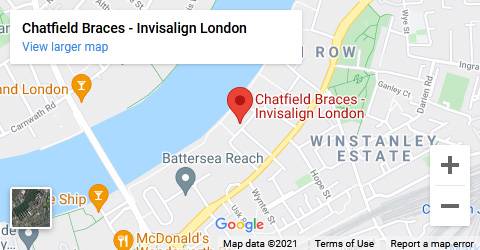 Click To View Full Map
Click To View Full Map 020 71834041
020 71834041
 info@chatfieldbraces.co.uk
info@chatfieldbraces.co.uk